2023 Turnover Trends by Industry
The last five years have been a rollercoaster for HR teams. For recruiters, specifically, moving from the layoffs of early 2020, to rapid-fire hiring in the Great Resignation of 2021, to more layoffs in 2022 and ongoing caution in 2023, it has been a tumultuous ride.
But what is the status of turnover right now? Are staffing shortages and the Great Resignation over, or are recruiters in some industries still feeling the effects? And what can recruiters do about such volatile turnover rates as they seek to find normalcy and stability in the coming months? Let’s dive into some data.
Employee Turnover Statistics by Industry
As always, turnover rates have varied by industry—with some, like healthcare and retail, hit harder than others. Here’s a quick look at trends in data from the US Bureau of Labor Statistics, focusing on annualized data from 2018-2022.
Turnover in Manufacturing
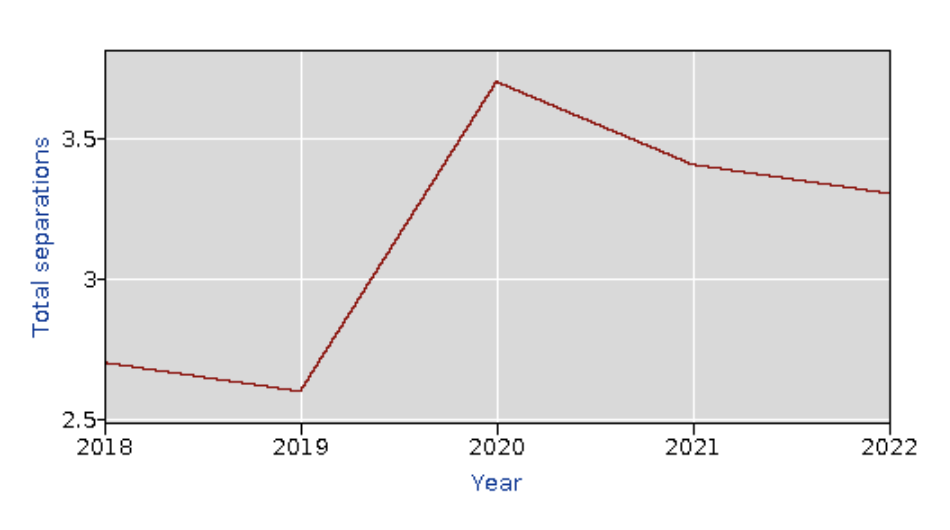
In the manufacturing space, demand for talent is high—but turnover is an ongoing struggle, as separations seem quite stagnant and are not dropping, while open roles have increased (according to Deloitte’s current report), over the last two years. The cause is a perfect storm of workforce shortages, supply chain issues, and inflation continues to plague manufacturing.
Turnover in Retail
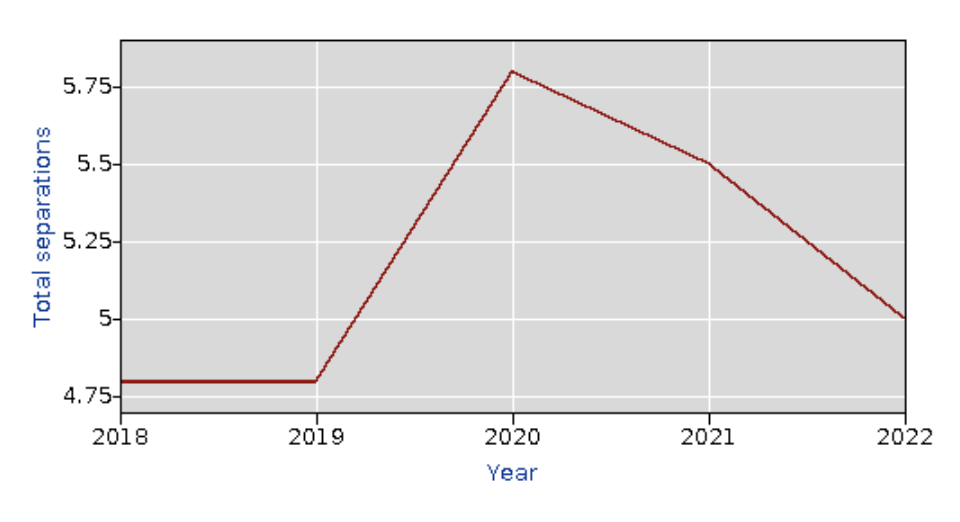
Retail businesses were particularly hard hit by high turnover in 2021. Customers are still cautious due to inflation and cost-of-living increases. Now, as the job market cools and the economy slows, separations seem to be slowing again to look a bit more like pre-pandemic levels. Job openings are slowing, which is telling especially in light of the seasonal hiring season.
Finance and Insurance Turnover
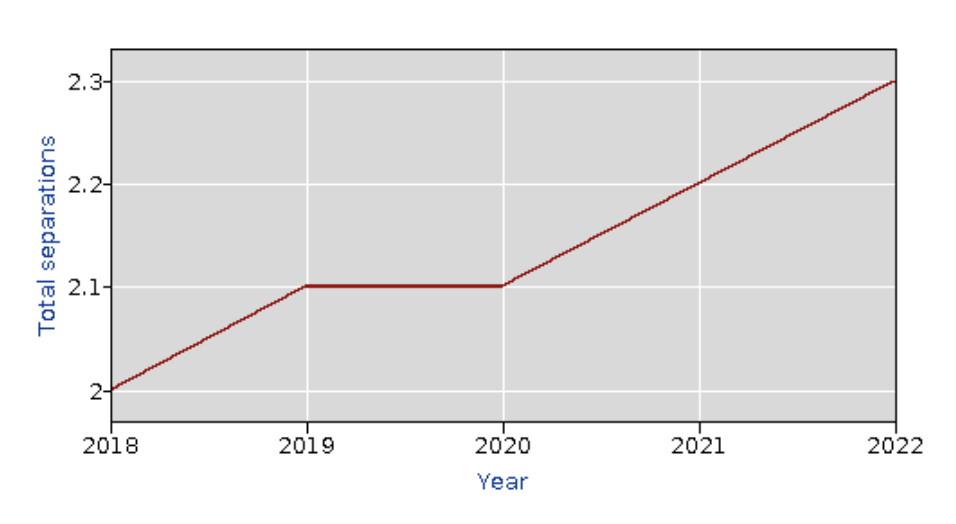
For employers in finance and insurance, between layoffs and other types of separations, total turnover has been high—but data so far in 2023 shows it may be stabilizing somewhat. 54% of chief financial officers ranked hiring and retaining staff as the most difficult challenge they are facing in 2023, and job openings for finance and insurance companies are continuing to defy expectations of slowed growth.
Professional and Business Services Turnover
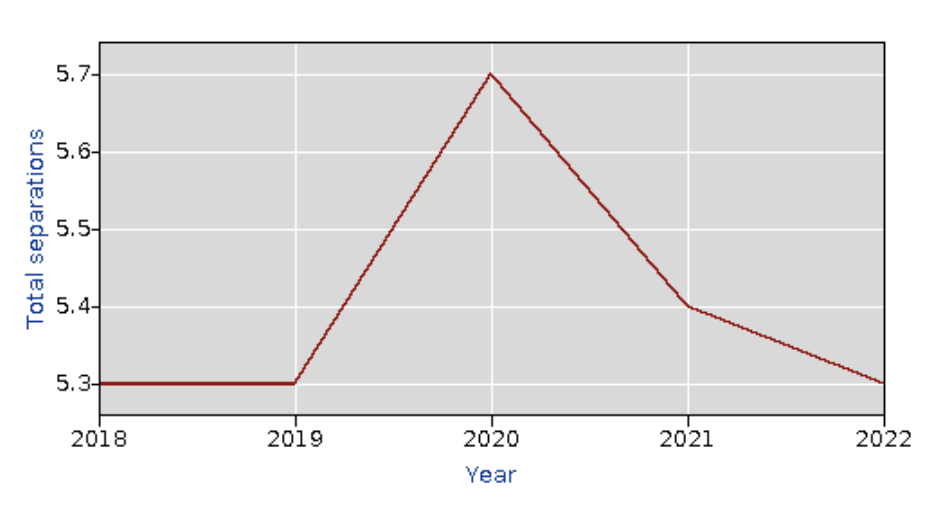
The broad professional services category shows some stability after an equally shaky time in 2020-2021. Job openings have stayed consistent, even spiking slightly in August 2023.
Information and Technology Turnover

Information industry employers have had a spike in turnover this past summer, after less volatility last year. In October 2023, 72% of technology companies are still looking to hire for open positions, signaling a possible end to the layoffs that plagued late 2022 and early 2023.
Turnover in Education
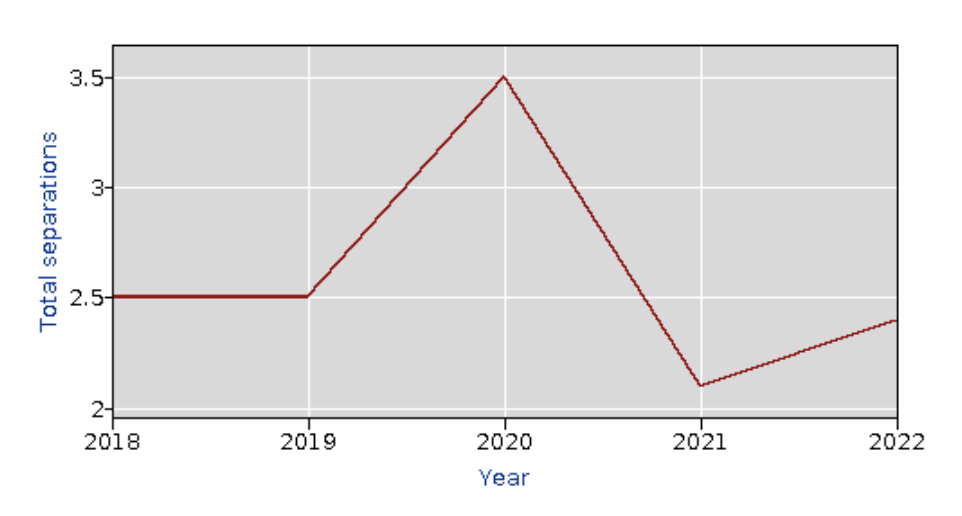
For those in education and related services, turnover rates have been a serious rollercoaster as lingering impacts from the pandemic and the teacher shortage continue. With less teachers joining the workforce each year, K-12 recruiters are seeing candidate pools dwindle. Through the summer, job openings remained consistent.
Healthcare Turnover
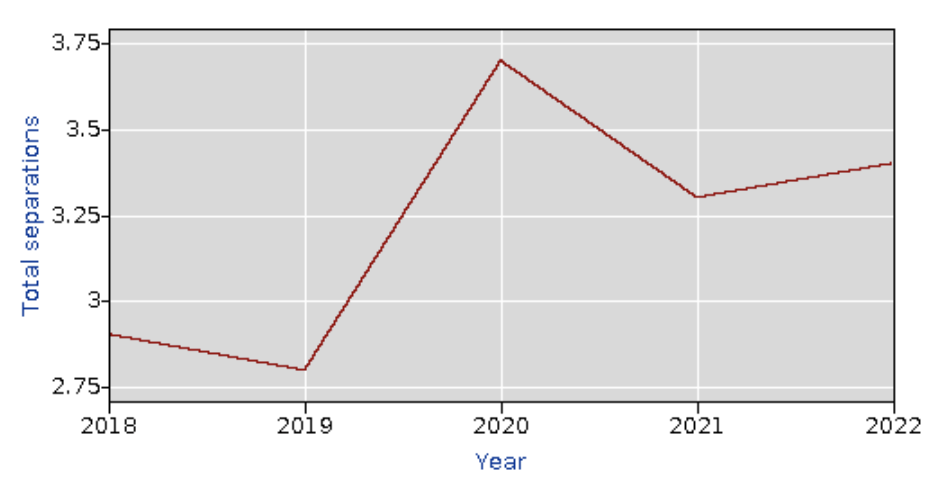
Healthcare has not yet rebounded from the spike in turnover triggered by the COVID-19 pandemic, and doesn’t yet show significant signs of stability on the horizon. There are less nurses entering the profession and there are cries of a large impending deficit of both nurses and physicians by the year 2030. Open positions remained strong through the summer.
Government Turnover

Total turnover rates are low in the public sector, although the coming election always introduces room for doubt in what these numbers might look like a year or two from now. Government job openings are relatively high and statistics from BLS show only half these positions are filled in any given month.
Turnover Trends and Predictions in 2023
According to Forbes, the average turnover rate across the US in 2023 is around 3.8%. Nearly two-thirds of those turnovers are attributed to quitting employees. The rest is attributed to layoffs and firings.
After a rush of layoffs in late 2022 and early 2023, that burst of separations has appeared to slow. Which leaves us with questions about whether employees will choose to hunker down with their current employers in this job market, or whether companies are beginning to equalize their staffing efforts.
Overall, unemployment remains low compared to historical trends according to the US Bureau of Labor Statistics (at 3.8% in October)—and historic inflation has contributed to a general decrease in job changes compared to the levels of just a year or two ago. A shrinking labor force could be causing the wealth in job openings going unfilled across industries. The general trend, according to data from the US government, is that many industries have open positions they are trying to fill.
Reasons Behind Turnover and Retention Rates
In August 2023, the Society for Human Resource Management conducted a survey of 1,516 HR professionals and asked what they considered to be the most pressing reasons for turnover at their organizations.
At the top of the list in the survey results was inadequate total compensation. Rounding out the rest of the top 3 reasons were a lack of career advancement opportunities, and a lack of workplace flexibility. The Harvard Business Review also made the case for a poor onboarding experience causing turnover in the first 30-90 days.
Companies who are highly focused on these areas can significantly improve their retention rates. Programs that center on preventing burnout, creating a culture of recognition and appreciation, promoting work-life balance, and engaging in positive management practices can all improve turnover rates and encourage retention throughout your team.
Effects of Employee Turnover
Why does all of this matter? Simply put, because turnover can directly harm your business and have a ripple effect across your team—and your organization’s bottom line. For example:
- Turnover is expensive. The cost of replacing an employee can add up to 150% of that employee’s salary—even higher for higher-level positions in your organization. This is thanks largely to the cost associated with opening a job role, moving candidates through the recruitment process, and making offers that include starting bonuses or salary adjustments.
- Turnover reduces productivity. Losing a team member causes work stoppage and knowledge loss that can have long-term effects on that team’s productivity and effectiveness. Picking up projects halfway through is going to require a learning curve, and any institutional knowledge that disappeared with the exiting employee may be impossible to get back.
- Turnover hurts team morale. Losing a colleague can feel a lot like losing a friend, causing remaining employees to feel less motivated and engaged in their role. Additionally, employees having to cover additional work because of a vacancy on their team can increase the risk of burnout and a sense of unappreciation.
More than 40% of turnover happens within the first month of a new hire’s start date. So, in addition to strong retention programs that can help employees feel engaged, empowered, and appreciated, a strong onboarding program is essential to keeping retention high and turnover low.
Start Retention at Hiring and Onboarding with interviewstream
Talking about turnover and its ripple effect on a business isn’t a particularly cheery topic. But don’t let these trends get you down. When it comes to retention, there are things in your control to help improve your company’s statistics.
Get started by leveraging the very best recruiting software, because quality hires give you the best odds for keeping teammates around for a long time. Then, find ways to make the most out of those tech investments by using them to improve the employee and onboarding experiences that will make new hires feel welcome and ready to stay aboard.
Go ahead and jump in. There’s no better time to start than right now. Schedule some time to chat here to learn about how we help you recruit the top candidates, ask the right questions, and onboard successfully so your new hires stay with your company a long time.
About The Author
Caroline Chessia is the Marketing Operations Specialist at interviewstream. She loves color-coordinated graphs, hiking in the mountains, and every dog she meets—especially the Golden Retrievers.
